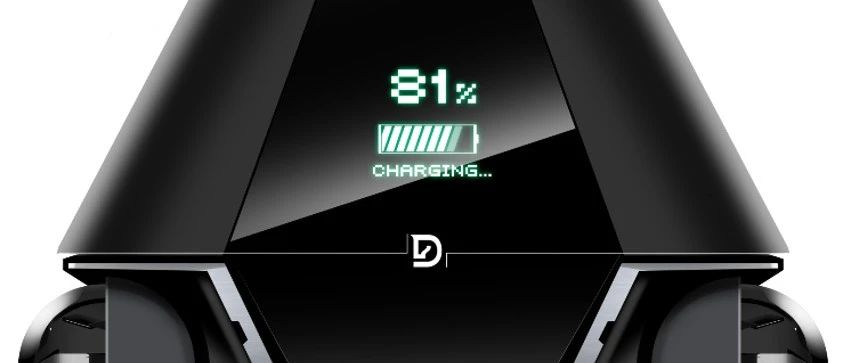Title: The Importance of Charging Infrastructure for New Energy Vehicles in China
Author: Zhu Yulong
With the rapid development of new energy vehicles in China, range anxiety has gradually been replaced by charging anxiety. Charging is considered the “last mile” for the promotion of new energy vehicles and is crucial to their popularization and development.
As new energy vehicles have exceeded expectations in terms of growth, charging infrastructure has become a necessity. At the Central Economic Work Conference held at the end of 2018, 5G infrastructure, ultra-high voltage, intercity high-speed railways and intercity rail transit, charging piles, big data centers, artificial intelligence, and industrial Internet were identified as “new infrastructure construction.” According to data released by the China Electric Vehicle Charging Infrastructure Promotion Alliance, as of November 2022, the total number of public charging piles reported by member units in the alliance was 1.731 million. In the first 11 months of this year, the cumulative number of charging infrastructure in China reached 4.949 million, an increase of 107.5% compared to the same period last year. The increment of charging infrastructure was 2.332 million, of which the increment of public charging piles increased by 105.4% compared to the same period last year.
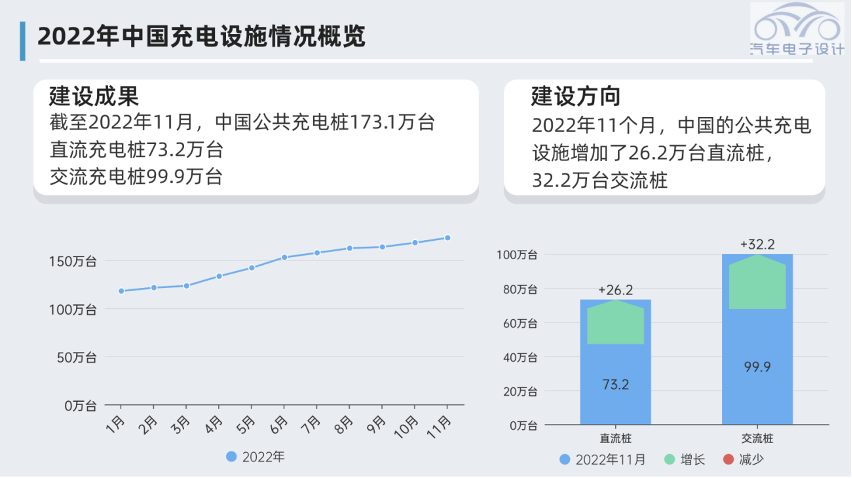
In the first 11 months of 2022, the increment of charging infrastructure reached 2.332 million, while the sales of new energy vehicles reached 6.067 million. The increment ratio of charging piles to cars is 1:2.6. Although the quantity of charging infrastructure is gradually meeting the needs of consumers, the single charging method still cannot meet the requirements for further popularization of new energy vehicles. The core issue here is the contradiction between the speed and convenience of charging.
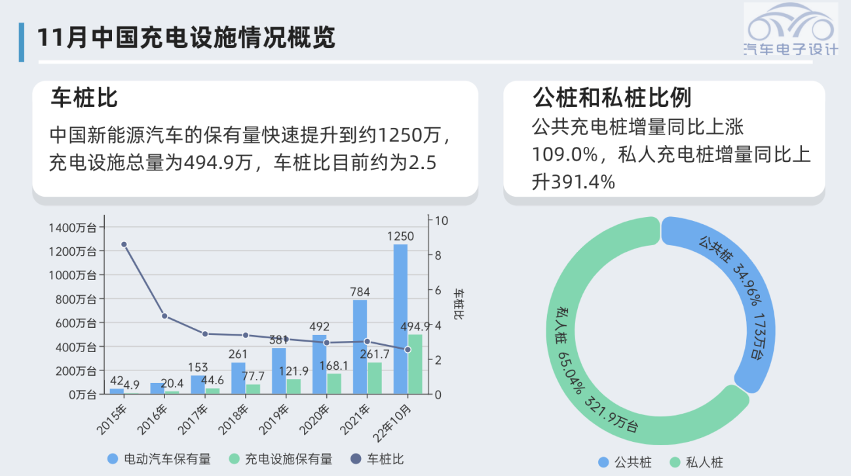
Fast Charging, Battery Swapping, and Mobile Charging
From a charging perspective, the previous approach mainly relied on mandatory home slow charging facilities, but this solution is limited by the capacity of the community’s electricity and parking space property rights. As charging facilities have expanded to public areas, there are two main opinions in the industry: fast charging advocates and battery swapping advocates. From a technical perspective, both charging methods have certain market space, but in terms of the market, whoever first runs market-oriented operations may gain a monopoly.### Fast Charging
This is the most popular and fueling-like mode for consumers. At major charging stations, queues always form in front of fast charging stations, while slow charging stations are ignored. Consumers are unwilling to spend too much time on refueling. Fast charging is welcomed by consumers because it does not change their original driving habits, and it is the fundamental reason why automobile companies have always adhered to the fast charging strategy. In reality, fast charging is plagued by problems in both power supply and vehicle support.
Ignoring vehicle types for now, the objective problem of upgrading electric distribution that fast charging poses is that 10 100-200 kW DC charging stations require a rated 1 MW substation. On the one hand, power grid approval is difficult. On the other hand, if the problem can only be solved entirely by fast charging stations, the pressure on national grid expansion will be enormous, and the total investment needed will be in the trillions.
Battery Swapping
The car-electric separation and battery swapping mode. Compared with the traditional charging station refueling mode, battery swapping has the advantages of efficient refueling and reducing initial vehicle purchase costs.
In terms of efficient refueling, it takes only about 1-5 minutes to swap batteries for passenger cars, which has an absolute advantage over traditional charging stations. In terms of initial vehicle purchase costs, because the power battery accounts for about 40%, the “vehicle-electricity integration” charging mode significantly increases the vehicle’s overall cost, while under the car-electric separation mode, the purchase price of an electric vehicle can be reduced by up to half. However, the actual battery leasing cost is not low during long-term use. During the vehicle’s life cycle, the lease cost will be higher than the purchase cost.
Battery swapping can not only alleviate the problem of long charging time, but centralized charging can also reduce the pressure on the power grid, making it more popular with enterprises. At the same time, battery swapping can to a certain extent avoid the safety risks that fast charging poses to batteries and vehicles. Battery swapping stations generally use slow charging, but the scale and turnover rate of battery swapping are restricted by the number of batteries. It may also face overcrowding during periods of high demand. For example, the problem of battery swapping for taxis in Changchun in November highlights the significant limitations of battery swapping mode in the low-temperature environment of the north.
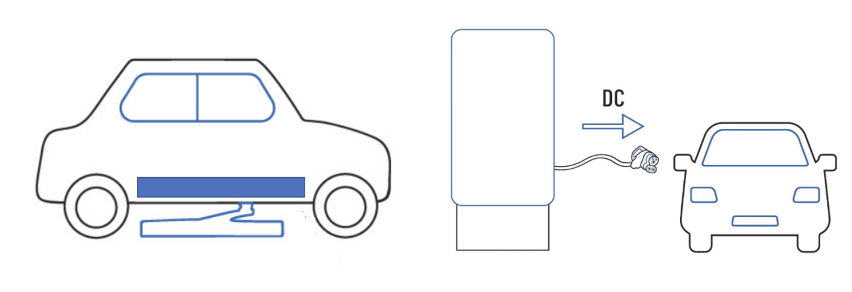
Distributed Mobile Charging
Besides fast charging and battery swapping, are there any other options for consumers? In fact, a new type of refueling model, mobile charging, is emerging in the market. This model can combine some of the advantages of fast charging and battery swapping.From a design principle standpoint, this is a mobile charging station, just like our phone’s portable power bank, ensuring that it can be charged anytime and anywhere. Currently, there are various mobile charging solutions available in the market, such as mobile energy replenishment vehicles, mobile storage vehicles, and mobile charging robots.
◎ Mobile Energy Replenishment Vehicle
A mobile replenishment vehicle is like a small “charging station” that serves as a distributed energy storage source or emergency power source for electric vehicles. The mobile charging vehicle can use fast charging mode to charge electric vehicles in emergency situations, and this mobile replenishment vehicle is specifically for emergency charging.
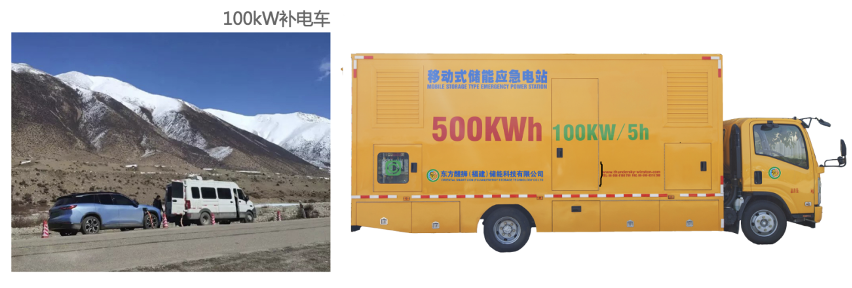
◎ Mobile Charging Robot
Finding an available charging station in a crowded underground parking garage is a hassle. But with a mobile intelligent charging robot, the robot can go to vacant parking spaces without charging stations to replenish the car with power. Currently, the charging robots on the market can fully charge new energy vehicles with a mileage of approximately 600km at once.
The original way of a car finding a station has been changed to a station finding a car – by calling the charging robot through a mini program or app. After hearing the call, the robot will autonomously drive to the designated location for charging according to the pre-planned route and return after charging is complete.
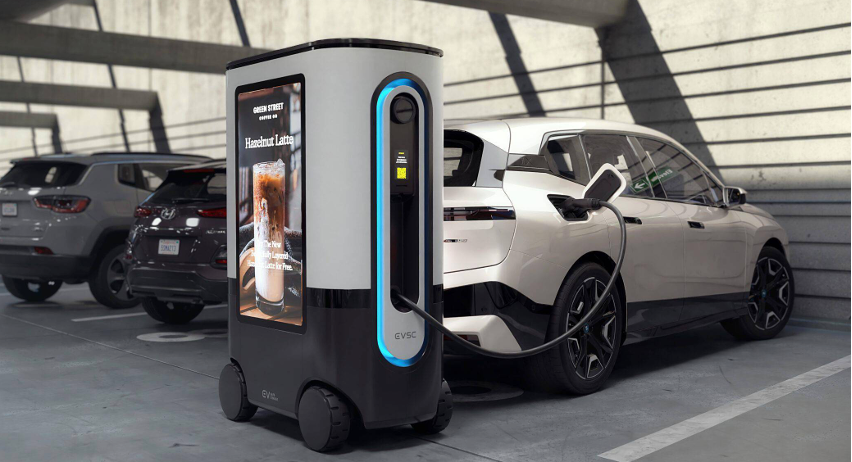
Prospects for Mobile Energy Replenishment
Mobile Energy Replenishment Scenarios
This mobile energy replenishment robot is a new type of layout for charging facilities. From the scope of application, it can provide convenient and fast charging for public parking facilities, shopping and entertainment centers, hotels, fleet operators, and owners. It overcomes the limitations of fixed electric vehicle charging piles and battery swapping stations, as well as saving on expensive power infrastructure expansion costs. Additionally, this robot can generate advertising revenue and display customized information for facilities through the screen’s digital advertising server. The charging robot can be called to the parking space where the electric vehicle is located through a mobile application or car-mounted information entertainment system. After charging, the robot can return to its base and be charged via the power grid, battery, solar energy, or a combination of these.This is a new Mobile Power Solutions (MPS) charging solution with significant advantages in flexible deployment. It also conforms to the policy direction of promoting new energy equipment according to user application scenarios, serving as a distributed energy storage function to provide a pivot for the new energy network architecture.
The Significance of “Moving Electricity” Mobile Energy Supplement
In the design of “moving electricity” mobile energy supplement, the interesting thing is that the robot takes electricity from the grid, which is also a typical distributed mobile energy storage facility. This can be understood as a movable energy storage system, which provides peak shaving and filling, frequency modulation and peak regulation, orderly charging, and emergency support services for the grid operation. According to the needs of the parking lot, the electricity can be effectively provided to the charging users of electric vehicles. At the same time, it can save thermal power peak regulation and peak load regulation, reduce carbon dioxide emissions, and generate carbon trading income according to the regional power load.
For consumers, as long as there are these mobile energy storage and charging systems in an area, “touchless” charging can be realized with just a mobile phone when needed.
Companies and Products for Layout of Mobile Energy Supplement
The characteristics of mobile energy supplement are:
◎ From the perspective of power consumption, MPS charging gets rid of the constraints of the power grid, realizing peak shaving and reducing the load of the power grid, making charging safer and more secure.
◎ From the perspective of the site, MPS charging breaks through spatial limitations and is more flexible in deployment.
◎ From the perspective of the application scenario, MPS realizes both charging piles and energy storage stations, and the economic benefits are directly doubled.
Currently, there have been many participants in this market, but it is mainly conceptual designs. The ability of players to cross the gap between conceptualization and practical products is tested by their technical and resource capabilities. Currently, the participants include battery companies such as Faraday Future and Guoxuan, car companies such as Volkswagen and power companies. Some emerging technology companies have also targeted this market.
For example, Volkswagen Group has designed the Mobiler Laderoboter (mobile charging robot) concept version, which allows the charger to enter the vehicle to alleviate the problem of charging difficulties. The charging robot is equipped with a camera, laser radar and ultrasonic sensor, which can use the mechanical arm and 25 kWh battery “truck” to charge the parked car by itself, with a charging power of up to 50 kW.
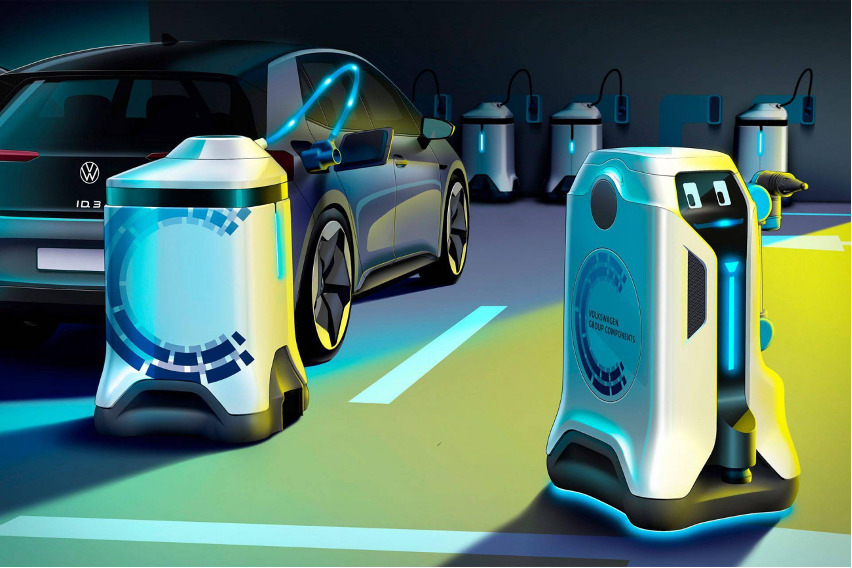
The futuristic charging robot “Mochi” from a battery company adopts the Faraday AESC vehicle-grade safety battery with a single capacity of 70 kWh and a charging and discharging power of 42 kW, which is compatible with mainstream electric vehicle models on the market. Equipped with multiple sensors such as Lidar and ultrasonic sensors, this charging robot has automatic driving and automatic charging functions; in the face of obstacles, it can achieve safe stopping.
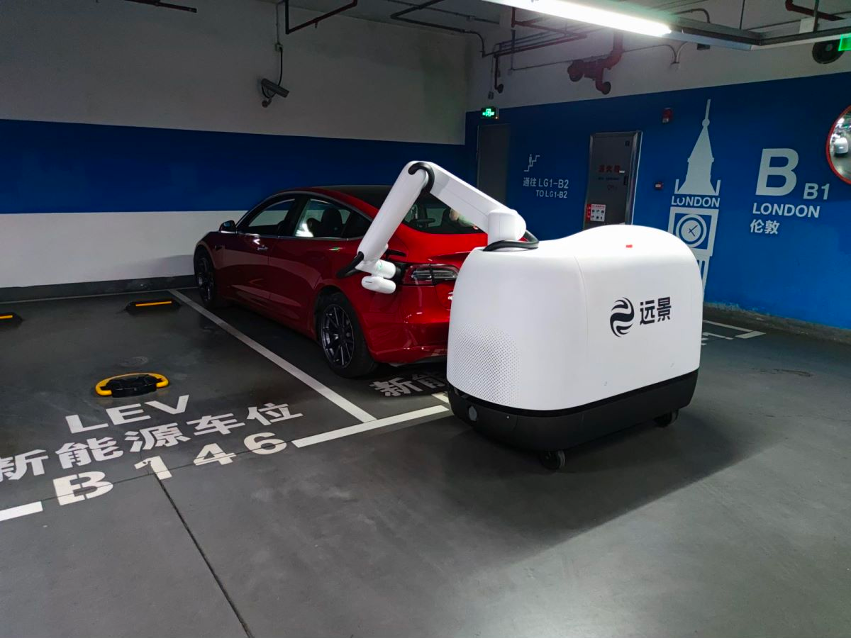
Another battery company, CATL, independently developed and manufactured EJDAT Smart Mobile Energy Storage and Charging Piles,which solve the charging problem through mobile charging. The product features easy layout, multiple scenarios, large capacity, and high power.
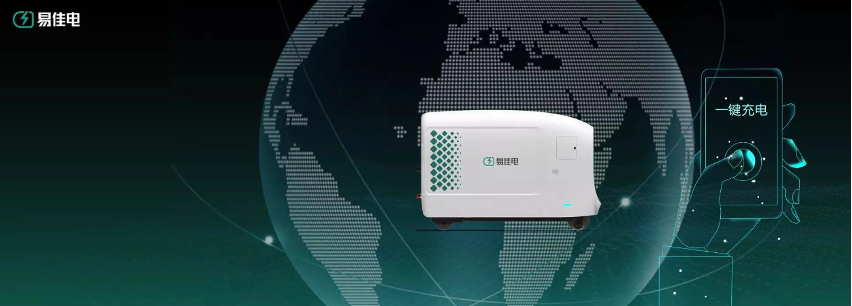
In addition to automakers and battery companies, some emerging technology companies have great potential for breakthroughs. In February of this year, Guoguang Shunneng, which was established in Shanghai, announced its entry into the MPS market with its DHForce Black Horse Power brand, providing users with full-chain and senseless charging services through the latest generation of intelligent mobile charging products. Its founder, Deng Xiaoguang, has worked for Siemens VDO, SAIC New Energy, NIO, and Qingtao Solid-state Battery, etc., and is also one of the drafters of the current national charging standards. Deng is a senior automotive professional who has created products with a production volume of more than 500,000. He has gathered a group of energy experts, international authoritative certification agency experts, and core management from Alibaba, Huawei, Volkswagen, and Tesla. It is reported that its products will start trial operation next year, and we will continue to focus on whether the market will welcome a good product that truly solves the pain points.From the current perspective, technology companies have a greater opportunity to create complete mobile charging products and promote and popularize them.
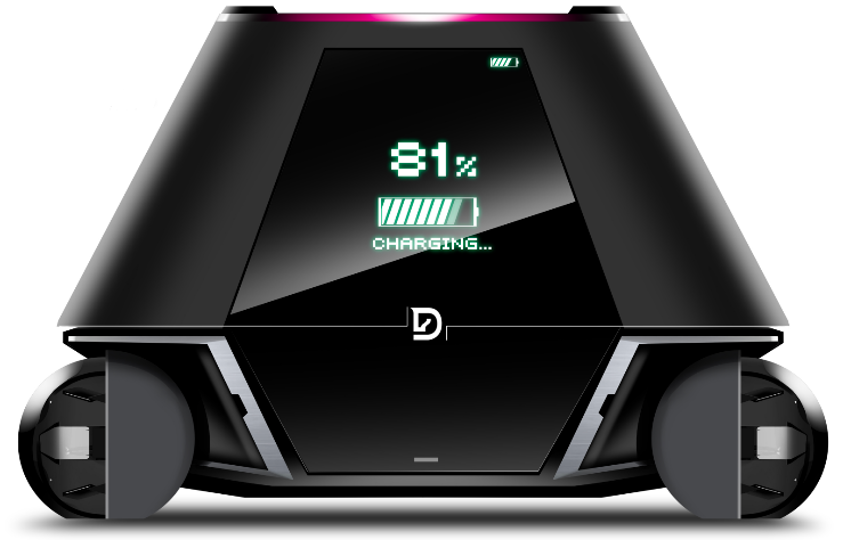
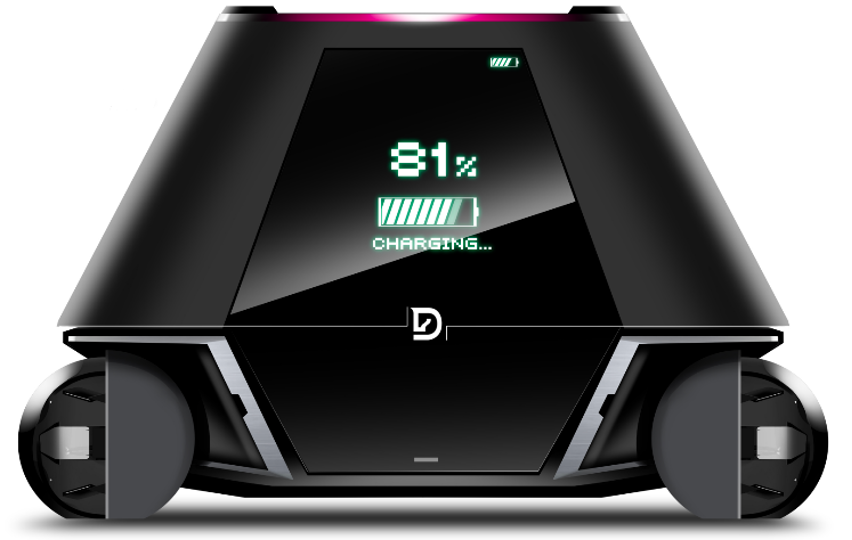
Summary: There are many ways to build China’s energy supplement system. For users, closed-loop mobile distributed charging is an interesting and more convenient solution with great potential. The MPS that combines energy storage and mobile charging can provide peak shaving and filling, frequency modulation, orderly charging, emergency support and other allocation services for grid operation. It can also save coal-fired power peak regulation and frequency modulation load, save carbon dioxide emissions, and generate carbon trading revenue.
At present, this market, which is still in the blue ocean stage of its start-up, has begun to attract various typical players, and the social and market value of mobile charging is gradually prominent. We believe that more practical solutions expected by the market will also arrive earlier.
This article is a translation by ChatGPT of a Chinese report from 42HOW. If you have any questions about it, please email bd@42how.com.
